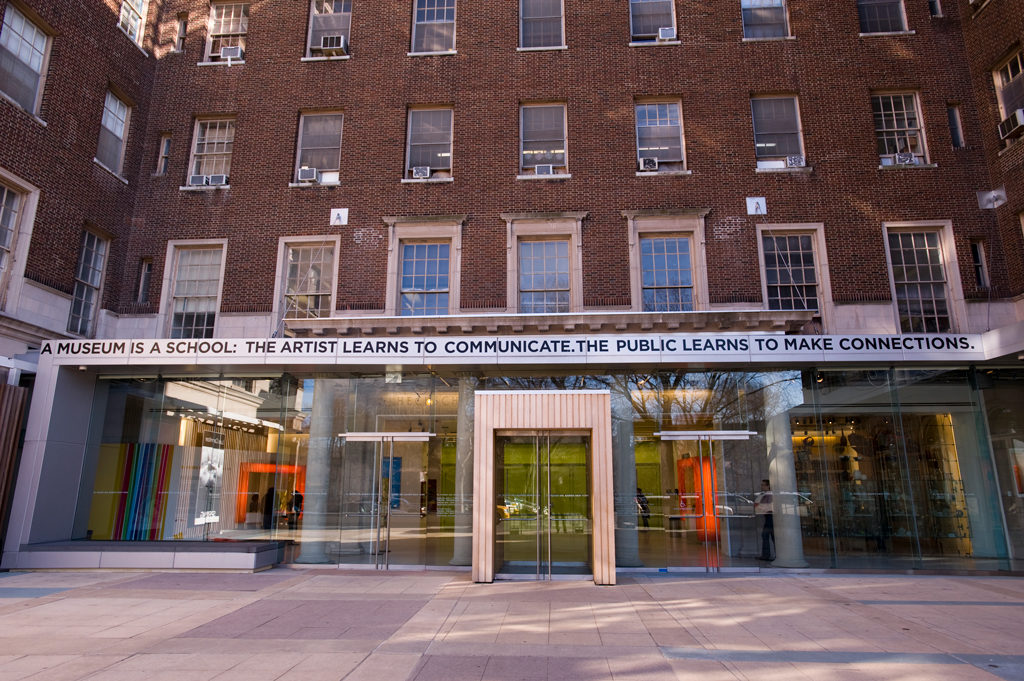[ad_1]

El Museo del Barrio.
WILLIAM ALATRISTE
El Museo del Barrio in Upper Manhattan announced that it has decided not to honor Princess Gloria von Thurn und Taxis, a conservative German socialite and prominent art collector, as part of its 50th anniversary gala later this year, according to a report in the New York Times. Some had argued that her right-wing politics and past comments about race and AIDS made her an inappropriate honoree for the institution, which is devoted to Latinx and Latin American art.
In an open letter, a former El Museo board member and curator, Yasmin Ramirez, described the prospect of honoring the princess as “a desperate move to attract attention and money to a historically underfunded museum.”
Some critics of El Museo’s plans pointed to an interview she gave on a 2001 German television show, in which she said that AIDS rates were high in Africa because “blacks like to copulate a lot.” (A 2008 Times article said she had tried to amend that statement around that time “by explaining that the reason for this was the continent’s intense heat.”)
Princess Gloria first rose to prominence in the 1980s after she married her distant cousin Prince Johannes von Thurn und Taxis, 23 years her senior. In 1985, when writer Bob Colacello interviewed her for Vanity Fair at the couple’s 500-room palace in Bavaria, he gave her the nickname “Princess TNT.” Throughout the intervening years she also became a prominent collector. (From 2010 to 2013, she appeared on the ARTnews “Top 200 Collectors” list.)
In 1990, after Prince Johannes’s death, she sold off assets ranging from jewelry and silver to metallurgical companies and 24 cars in order to cover a debt of $500 million, and spoke openly about having staunch conservative Catholic views, counting among her friends Cardinal Josef Ratzinger, the future Pope Benedict XVI.
A December 2018 New York Times article termed her “the sun queen around which many traditionalist Roman Catholics opposed to Pope Francis orbit” and that her “Roman palace overlooking the ancient forum is a preferred salon for opposition cardinals, bitter bishops and populists like Stephen K. Bannon.” Princess Gloria rejected that characterization. (The article also cited friendships with Hillary Clinton, Quincy Jones, and André Leon Talley.)
In an unattributed statement sent to the Times Thursday morning, the museum said of its decision to “part ways” with Princess Gloria: “As a cultural institution founded on the principles of inclusion, civil rights and diversity, El Museo del Barrio is committed to honoring individuals that uphold those values and support the elevation of Latino and Latin American art and culture both in the United States and beyond.” El Museo’s current director Patrick Charpenel did not immediately reply to a request for comment.
In an email sent to the Times, Princess Gloria wrote, “I am disappointed to what degree the society is divided today and that there seems to be absolutely no room for tolerance whatsoever. My conservative religious views have absolutely no impact on my open mind on cultural diversity and inclusion. I have been friends with all sorts of people of different political and religious views all my life.”
El Museo was founded in 1969 by Puerto Rican artists, activists, and educators in a school in East Harlem, or “el barrio” as it’s called by residents, as a way to educate its community of the arts and culture from Puerto Rico. Over the years, the museum has gone through various iterations and suffered from severe financial difficulties, as well as had four executive directors in seven years.
In recent years, its galas have taken place each May at the Plaza Hotel in New York. The other honorees at this year’s gala are El Museo founder and artist Raphael Montañez, philanthropist collector Ella Fontanals-Cisneros, and Miami developer and collector Craig Robins.
Charpenel has smoothed over the museum’s financial woes, added board members, and hired a curator since he took over in May 2017. When I interviewed him last summer, he told me that he was looking to make the museum into a place of rigorous scholarship for Latinx and Latin American art that highlights the contributions and “make known the rich history of Latinos in this country.”
“I truly believe that cultural institutions are social institutions, and the role of museums is to respond to the community and what is happening in the world,” he said. “Museums should be aware of the roles they play—that is why we have to build platforms in relation to our own community.”
“For me, a museum is not a platform to legitimize history and culture,” he continued, “but to problematize.”
[ad_2]
Source link

